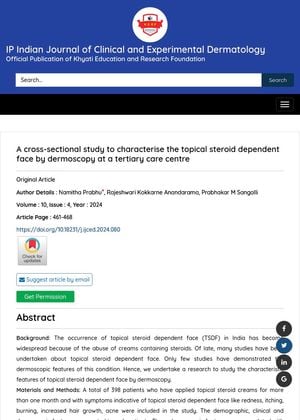A Cross-Sectional Study to Characterize the Topical Steroid Dependent Face by Dermoscopy at a Tertiary Care Center
November 2024
in “
IP Indian Journal of Clinical and Experimental Dermatology
”

🚨 The study is primarily focused on the effects of topical steroids on facial skin, with minimal relevance to hair loss or androgen-related treatments, though it mentions terminal hair as a dermoscopic feature.
TLDR Dermoscopy is a useful tool for diagnosing and managing topical steroid dependent face.
This study involved 398 patients with topical steroid dependent face (TSDF) who had used steroid creams for over a month, presenting symptoms like redness, itching, and acne. The research aimed to identify dermoscopic features of TSDF, revealing common findings such as diffuse red areas, terminal hair, and telangiectasias. The study found that melasma was a frequent reason for steroid use, with 0.1% Betamethasone valerate being the most common steroid. The results highlighted that dermoscopic evaluation is a valuable, efficient tool for diagnosing TSDF, distinguishing it from other skin disorders, and aiding in its management.



